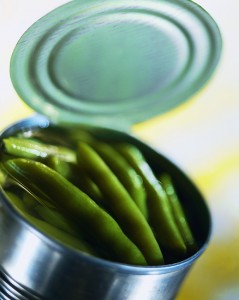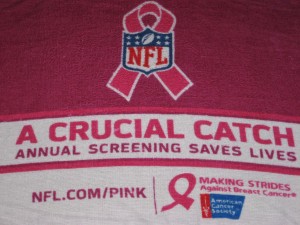Green Choices Benefit the WHOLE Family
 My husband and I recently learned that our 12½ year old dog, Stella, has lymphoma, a relatively common canine cancer. Although we suspected that something serious was going on when we brought her to the vet, the diagnosis was devastating.
My husband and I recently learned that our 12½ year old dog, Stella, has lymphoma, a relatively common canine cancer. Although we suspected that something serious was going on when we brought her to the vet, the diagnosis was devastating.
As any pet lover knows, Stella is not just a dog. She’s a beloved member of our family. We “adopted” her after having two miscarriages, and refer to her as our “firstborn” and “big sister” of our kids. And despite a couple (OK, a few…) really distasteful habits, she’s pretty much the perfect dog. Easy going. Gentle. Great with children.
Desperate for alternatives, I turned to the Web. Since lymphoma is one of the most common malignant tumors in dogs, I found loads of information—and lots of heart breaking stories from pet owners who were equally desperate to find cures for “Bear,” “Kodi,” and “Marty.”
The main treatment for lymphoma is chemotherapy. But spending thousands of dollars on chemo and visiting the vet twice a week, simply isn’t an option for our family. Not to mention the side effects and invasive nature of the regime…
Our goal is to make Stella’s last days as comfortable as possible—and to enjoy her company for as long as we can. So, when I came across some information about treatments that promise to do just that, my hope meter soared.
 According to numerous sources, including Ted Schneck, author of “Curing Canine Cancer: Natural Cancer Treatments That Work,” cleaning up your dog’s environment is one of the top things you can do for them.
According to numerous sources, including Ted Schneck, author of “Curing Canine Cancer: Natural Cancer Treatments That Work,” cleaning up your dog’s environment is one of the top things you can do for them.
“Our environment is filled with chemicals that we use every day. Pesticides for the lawn, ammonia and chlorine for cleaning around the house, chemicals in our foods, the list goes on and on. All of these can be helpful in some areas of life, but they’re DREADFUL for your dog fighting cancer.... That's why to give your dog a fighting chance these chemicals need to disappear from his environment fast.”
Making more health-conscious, environmentally friendly choices may not cure Stella, but it certainly can’t hurt. And, I know it will provide benefits for the rest of my family, too.*
*Check with your vet before giving your pet any medication or remedy. My vet cautioned that some of the recommendations I found online could actually make Stella’s condition worse.

 The more we learn about the 80,000-100,000 unregulated chemicals out there, the more we realize how dangerous some are to our health. There is growing evidence linking chemical exposure to
The more we learn about the 80,000-100,000 unregulated chemicals out there, the more we realize how dangerous some are to our health. There is growing evidence linking chemical exposure to 
 Thanksgiving is nearly upon us and people everywhere are busily preparing their shopping lists and menus. You may want to reconsider any canned items on your list, in light of this startling news.
Thanksgiving is nearly upon us and people everywhere are busily preparing their shopping lists and menus. You may want to reconsider any canned items on your list, in light of this startling news.
